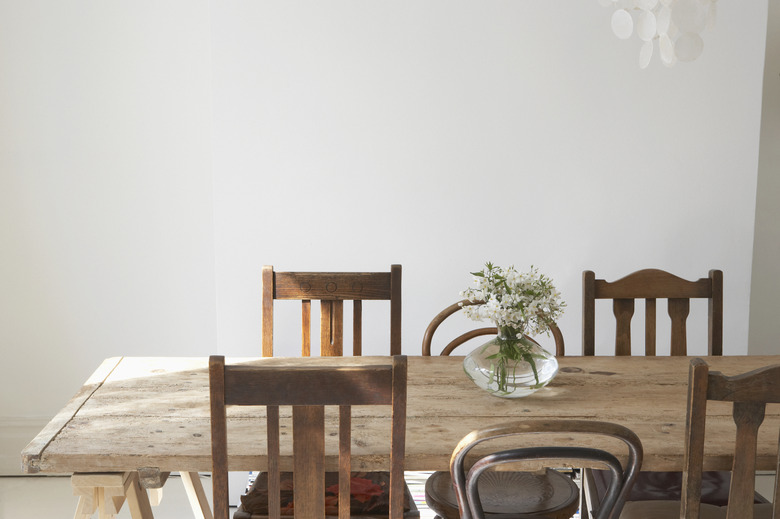What Is Rubberwood Furniture?
When you're looking for solid wood furniture, you have several different choices for the actual wood material. Rubberwood is a growing option in the world of affordable wood furniture. Looking at the characteristics of the wood helps you decide if it's the right type of furniture for your needs.
What Is Rubberwood?
What Is Rubberwood?
The rubberwood used in furniture comes from the tree that produces latex. They're also called rubber trees, parawood, Asian hardwood, plantation hardwood or Hevea brasiliensis. Native to Brazil, these trees often grow on plantations with lots of production throughout Asia. The trees mature after about nine years. That's when the latex extraction starts, and it continues until latex production starts to slow, usually when the tree is about 25 to 30 years old.
When it's no longer useful for latex production, the tree gets harvested for other purposes, including furniture. The countries harvesting the wood typically build the furniture then export it for sale rather than exporting the raw wood. Rubberwood is used as a solid wood, but it's also used for veneer, particleboard and medium-density fiberboard.
Appearance of Rubberwood Furniture
Appearance of Rubberwood Furniture
The name can be a bit confusing. Even though it's used to make rubber, the rubber tree wood isn't actually rubbery. It's a solid wood product that holds up well in furniture. The light color, often described as light blonde to medium tan, makes rubberwood a popular option for building things. It's similar in color to poplar or pine, so it's light enough to take on a variety of stains and finishes. Rubberwood is a little on the coarse side with an open texture and a straight grain. It's similar to maple in terms of characteristics but with a more porous structure.
Pros and Cons of Rubberwood
Pros and Cons of Rubberwood
The wood from a rubber tree is relatively easy to work with, whether you're using power tools or working with it by hand. It takes stains and finishes well, which makes it ideal to use in furniture. Rubberwood is also ideal for painted furniture pieces. It's also a cost-effective option, which means the finished furniture pieces tend to be more affordable than other hardwood options.
One drawback of rubberwood is its tendency to warp and twist while it's drying. This can cause some distortion in the wood before it fully dries. But once it's seasoned, it tends to be stable and offers similar durability to other hardwood materials. People with latex or rubber allergies may notice a reaction when working with rubberwood. Since rubberwood tends to have issues with fungus and insect infestations, the wood is usually coated in antifungal insecticide chemicals after it's cut. Kiln drying helps diffuse those chemicals, but some people prefer to avoid products with harsh chemicals used during processing.
Sustainability of Rubberwood
Sustainability of Rubberwood
One of the major selling points of rubberwood furniture is the claim that it's sustainable. The idea is that using the trees for furniture instead of letting them rot and release carbon into the air is better for the environment. But the tree plantations can negatively affect the environment. That's because the demand for the wood has caused an increase in the plantations, which often take over virgin rainforests and negatively affect biodiversity in the area. These plantations also use lots of water for irrigation, introduce chemicals into the environment and may increase erosion.
While some rubberwood is FSC certified, most of it isn't. The Forest Stewardship Council is working with some countries to try to increase certification of rubber trees. For example, the Thai government is working with the FSC to help smaller rubber tree farmers meet the standards of the organization.
Budget is often a consideration when buying furniture, which makes rubberwood an appealing option for cost-conscious consumers. Looking at the characteristics of this furniture-building material helps you decide if it's the best option for your next furniture purchase.
References
- DCI: Why Rubberwood Is Not Sustainable
- The Wood Database: Rubberwood
- Woodworking Network: Rubberwood Bounces Back: Components & Furniture Usage Grows
- Furniture Today: Home-Grown Rubberwood Drives Furniture Production
- FSC: FSC Welcomes Thai Government's Support on Certifying Rubber Under FSC Certification Scheme
- Simplicity Sofas: Is Rubberwood Considered a Good Wood to Use for Furniture?
